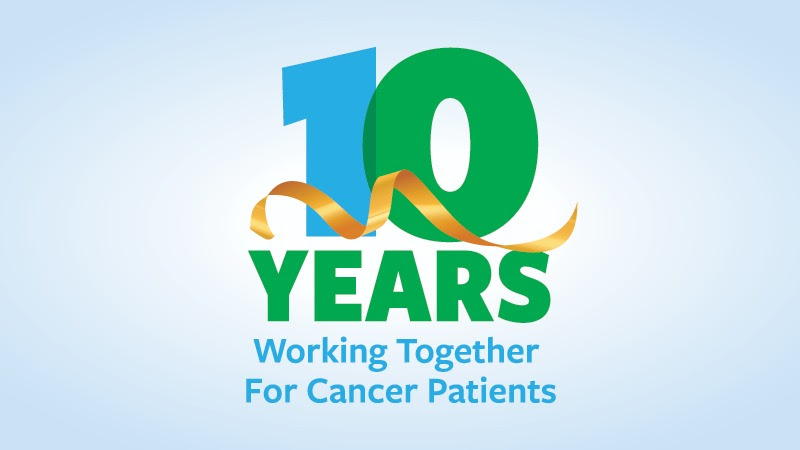Preventing Infections in Cancer Patients Program Makes a Difference |
|---|
Imagine being diagnosed with cancer, going through chemotherapy, and then getting sidelined by an infection. Unfortunately, for people with cancer, this is a serious and potential side effect of chemotherapy. CDC’s Preventing Infections in Cancer Patients (PICP) program provides resources on how to lower the risk of infection. The PICP program is celebrating its 10-year anniversary, and continues to provide evidence-based resources for patients, caregivers and healthcare professionals.
|
|---|
To celebrate this milestone, the program has developed its first-ever public service announcement (PSA) highlighting the importance of infection prevention during chemotherapy and tips on how people with cancer can lower their infection risk. A new blog post by Dr. Lisa Richardson, director of CDC’s Division of Cancer Prevention and Control, celebrates the program’s success and encourages people with cancer to stay positive and know the steps they can take to lower their risk of infection during chemotherapy. Learn more about the PICP program and its new PSA.
|
|---|
New Blog Post Promotes the Value of Prevention for Older Adults |
|---|
 |
Taking steps to stay healthy doesn’t have an age limit. Getting regular physical activity can benefit your health and lower the risk of some cancers, even if you start later in life. The problem is, our nation needs to do better to reinforce this message among older adults. A blog post featuring Dr. Robyn Stone, Senior Vice President of Research at LeadingAge, calls attention to the recent CDC-sponsored supplemental issue of The Gerontologist, which shows that there are many opportunities to promote cancer prevention during older adulthood. Dr. Stone discusses the development of a national prevention initiative for people 65 years and older, and community efforts to connect this population with the resources they need to stay healthy.
|
|---|
U.S. Cancer Statistics: Providing More Data Options |
|---|
 |
Finding the latest cancer information on the entire U.S. population and viewing it with interactive maps and graphs is easy. Just go to the U.S. Cancer Statistics Data Visualizations tool to get it, and now, two new modules are available.
The Risk Factor-Associated Cancers module presents incidence for cancers associated with five common risk factors shared by some cancer types. These include, conclusive evidence linking cancer at multiple sites with tobacco use, alcohol use, human papillomavirus (HPV) infection, excess body weight, and physical inactivity. |
|---|
The Rates of New Cancers in American Indian and Alaska Native (AI/AN) module includes incidence data linked to Indian Health Services (IHS) patient registration data and are restricted to non-Hispanic populations residing in IHS purchased/referred care delivery areas (PRCDA). This provides even more precise cancer statistics for AI/ AN populations, and shows cancer incidence for 20 cancer sites and data by IHS Region, sex, and cancer type.
|
|---|
New Study Looks at Indoor Tanning Among U.S. High School Students |
|---|
 |
A new study looks at changes in indoor tanning among U.S. high school students, by sex, age, and race/ethnicity, using data from the national Youth Risk Behavior Survey (YRBS). From 2009 to 2017, indoor tanning declined overall from 15.6% to 5.6% of high school students. There were significant declines in indoor tanning among non-Hispanic white female students (37.4% to 10.1%) and Hispanic female students (10.5% to 3.0%), who have historically had the highest use. From 2015 to 2017, indoor tanning did not decrease among non-Hispanic white and Hispanic male students. Ongoing efforts are needed to change pro-tanning social norms and protect adolescents from the harms of indoor tanning.
|
|---|
Free Webinar: Two-Part Series on Cancer Prevention During Older Adulthood |
|---|
 |
Join The Gerontological Society of America (GSA) for a two-part series on cancer prevention during older adulthood. Part one, Health Literacy Considerations for Cancer Prevention Initiatives With Older Adults, features Dr. Rima E. Rudd and will provide the latest developments in health communication strategies for older adults. The webinar builds on a paper, “Health Literacy Considerations for a New Cancer Prevention Initiative” authored by Dr. Rudd and published in a CDC-funded supplemental issue of The Gerontologist on Opportunities for Cancer Prevention During Older Adulthood. This webinar takes place on June 28, 2019 from 12 to 1 p.m. (ET).
|
|---|
Part two of the series, Sun Protection and Sunburn Among Older U.S. Adults, features CDC’s Dawn Holman, MPH, and will be based on a paper titled, "Association Between Sun Protection Behaviors and Sunburn Among U.S. Older Adults," which was published in the same issue of The Gerontologist. This webinar takes place on August 2, 2019 from 12 to 1 p.m. (ET). Both webinars will be archived on the GSA website.
|
|---|
Did You Know?
|
|---|






















.png)










No hay comentarios:
Publicar un comentario